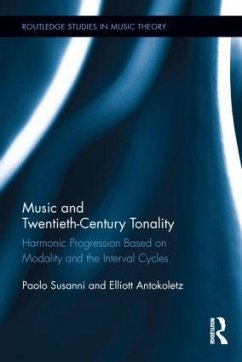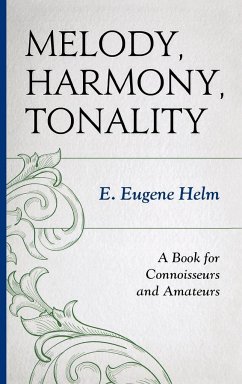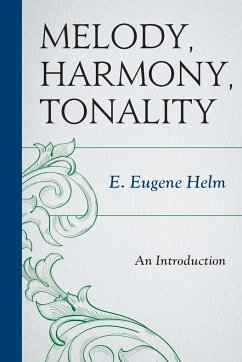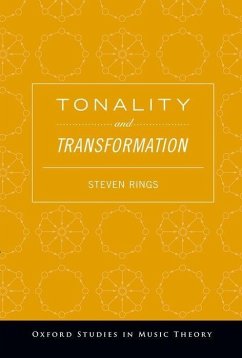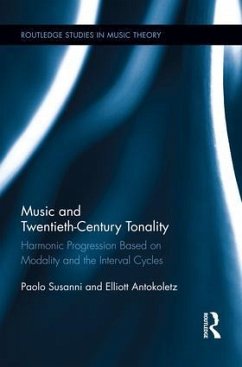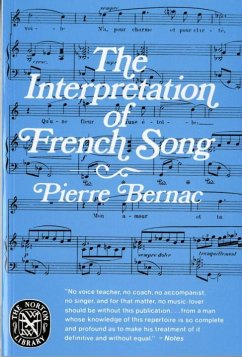
Function, Functional Cycle, and the Constitution of Tonality
Versandkostenfrei!
Versandfertig in über 4 Wochen
174,99 €
inkl. MwSt.

PAYBACK Punkte
87 °P sammeln!
Tonal-harmonic function-the object of this study-remains an obscure concept. It has been insufficiently studied and poorly defined by both representatives of the time of function (European music and music theory of the eighteenth and nineteenth centuries) and its critics of the time outside function (since Schenker until present). Yet, considering the efficiency of function and the results of its practical application-pretty much, all good music of the common practice-one may reconsider the complete cancellation of this concept for research and pedagogy. It is time to return tonal-harmonic fun...
Tonal-harmonic function-the object of this study-remains an obscure concept. It has been insufficiently studied and poorly defined by both representatives of the time of function (European music and music theory of the eighteenth and nineteenth centuries) and its critics of the time outside function (since Schenker until present). Yet, considering the efficiency of function and the results of its practical application-pretty much, all good music of the common practice-one may reconsider the complete cancellation of this concept for research and pedagogy. It is time to return tonal-harmonic function into music theory pedagogy. Tonal work is a marvel of music. It is partially handmade and partially the product of nature (either a divine creation or a product of natural evolution). It is the result of continuous and arduous work of generations of talented musicians that only in European context spans over two and half millennia. Its formation and becoming went in parallel with human evolution. Regrettable attempts to abandon functionality in music for several decades after the two disastrous military conflicts of the twentieth century itself can be cancelled-with facility this time, with no harm for the masterpieces, and with the benefit for future generations of musicians. And then there is a pragmatic consideration: the way music theory offers its concepts to students today is notably problematic. By eliminating harmonic function from discussions of tonal music, teachers incur serious damage to the process of learning that is by itself rather difficult and dicey. Perhaps, the direct goal of this book is more pragmatic than theoretical. Its local and tangible goal is to return to a very effective method of acquisition of specifically musical knowledge, based upon proven tradition of teaching harmony and form.






